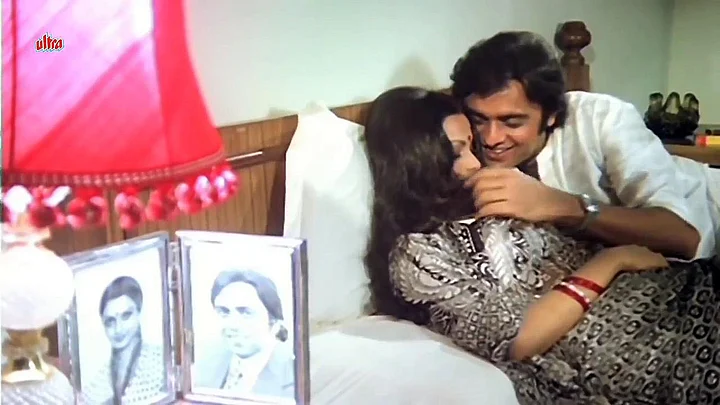It’s the age of downloads from the internet, miscellaneous search engines and Youtube. DVD rental libraries are shutting shop and the National Film Archive in Pune appears to be in limbo.
Meanwhile, an incalculable number of celluloid film prints of black-and-white classics and believe this, films even from the 60s and 70s have perished with the wind. Case in point: Manik Chatterjee’s Ghar (1978) which established Rekha as an actress capable of knocking out steel-strong performances. It is accessible on fuzzy digital formats. Regrettably, though, the story of a woman, coping with trauma of rape, can no longer be screened at cinema halls.
Worse, over 10,000 films of variable quality are in danger of going up in smoke. Laboratories which stock the prints have been either selling them off for a fistful of .02 rupees or junking them. According to P K Nair, former chief of the National Film Archive, celluloid is often sold off to vendors who use the material to make bangles and costume jewellery.
Celluloid’s Incalculable Loss
- Incalculable number of celluloid film prints of black-and-white classics have perished.
- Prints lost forever: Alam Ara (1931), Mughal-e-Azam (1960), Ghar (1978)
- Some endangered films: Sangram (1950), Halaku (1956), Sone ki Chidiya (1958), Sohni Mahiwal (1958), Kangan (1959).
- Over 10,000 films of variable quality are in danger of going up in smoke.
- Laboratories which stock the prints have been junking them.
- Prints in a spotty condition could be restored and cured but most have decayed out of sheer neglect and apathy.
About-to-be-lost List
Innocuous-looking double-page public notices have frequently been printed in trade magazines. The Bombay Film Laboratories Pvt Ltd (now known as Raheja Princess Apartments Pvt Ltd), put out one recently.
Even if some of the prints are in a spotty condition, they could be restored and cured in full or in part. A film preservationist, requesting anonymity, explained, “Look, the situation is a Gordian knot. Obviously, the owners of the rights or their inheritors have not come forward to retrieve the films. The lab cannot store them forever since it is costly to maintain the prints at certain air-conditioned temperatures and under humidity control. It is but natural for the lab to move on and do what has been common – to dispose the prints as waste material.”
Films under threat are a mixed but tantalising bunch: Nanabhai Bhatt’s Kangan (1959) showcasing Ashok Kumar with Nirupa Roy. According to Bharati Jaffrey, several film prints of her father’s significant works, including Sangram (1950), cannot be located for love or money.“All I have is a still or two and the original poster of Sangram,” she added wistfully.
The yahoo ‘rebel’ star Shammi Kapoor wooed Madhubala in Boy Friend (1961) and had serenaded his would be-wife Geeta Bali in Coffee House (1952) as well as Miss Coca Cola (1953). All the three Shammi Kapoor films have figured on the about-to-be-lost list.
Endangered Titles
Consider these endangered titles too: Char Diwari (Shashi Kapoor-Nanda, 1959), Dhaake ki Malmal (Kishore Kumar-Madhubala, 1956), A R Kardar’s Dillagi (Suraiya-Shyam, 1949), D D Kashyap’s Halaku (a very fragile Meena Kumari with ‘Loin’ Ajit and Pran, 1956), Kidar Sharma’s Hamari Yaad Aayegi (Tanuja perky as ever, 1961), Kishore Sahu’s adaptation of Shakespeare’s Hamlet (Sahu as the Prince of Denmark and Mala Sinha as the delicate Ophelia, 1954) and Nanabhai Bhatt’s Madam XYZ (the undervalued Shakila with the forgotten Suresh, 1959).
More: Shahid Latif’s Sone ki Chidiya (1958), based on a story by Ismat Chughtai, featuring Nutan, Balraj Sahni and Talat Mehmood (yes, he acted too) may go poof too. Ditto Raja Nawathe’s romantic tragedy Sohni Mahiwal (1958) featuring Nimmi and Bharat Bhushan.
Those who remember the intimidating Leather Face Shaikh Mukhtar may feel a twinge of regret over the demise of one of his last movies Tel Maalish Boot Polish (1961).
Plus, there could be a fade-out of the lesser-known but delectably named Lady of the Lake, Private Secretary, Black Shadow, Black Rider, Basre ki Hoor, Baghdad ki Raaten (wow!), Circus Sundari, Elephant Queen, Gun Fight, Pahadi Naagin, Jadugar Daku, not to forget a clutch of vintage mythologicals, including Ram Hanuman Yudh, Naag Panchami and Naag Shakti.
Irreparable Loss
Returning to the anonymous preservationist, he wondered, “Who knows how many wonderful films have decayed out of sheer neglect and apathy? The number of lost films is incalculable. The preservation of our film history sounds good only on paper, not in practice. After all, everyone’s watching cricket on television nowadays.”
And so film heritage burns.
- Indeed, unbeknownst to new generation filmgoers, India’s first talkie film Alam Ara (1931) doesn’t exist. Only a few of its scattered photo stills do.
- Missing: Baburao Painter’s Savkari Pash (1925) or The Indian Shylock, believed to be a keystone film of the silent era.
- Can anyone ever glimpse the footage of Mughal-e-Azam (1960) shot in the early 1950s by K Asif with the original leading lady Nargis? Nope.
- India’s first feature film, Dadasaheb Phalke’s Raja Harishchandra (1913), survives only in its first and last reel. The two reels, in between, are lost forever.
- Before Alam Ara, Ardeshir Irani produced and directed the silent Wild Cats of Bombay (1926) and Cinema Girl (1930). Untraceable.
- Films produced by the dozen by Imperial Studios, Madan Theatres and the early films of Sagar Company. Kahan gaye woh classics?
- Neither can you lend an ear to Indrasabha (1932) packed with a staggering number of 60 songs.
Going by the rank indifference of everyone from Mumbai’s film industry in general to New Delhi’s Ministry of Information and Broadcasting in charge of film culture, the loss is irreparable.
(The writer is a film critic, filmmaker, theatre director and a weekend painter)
